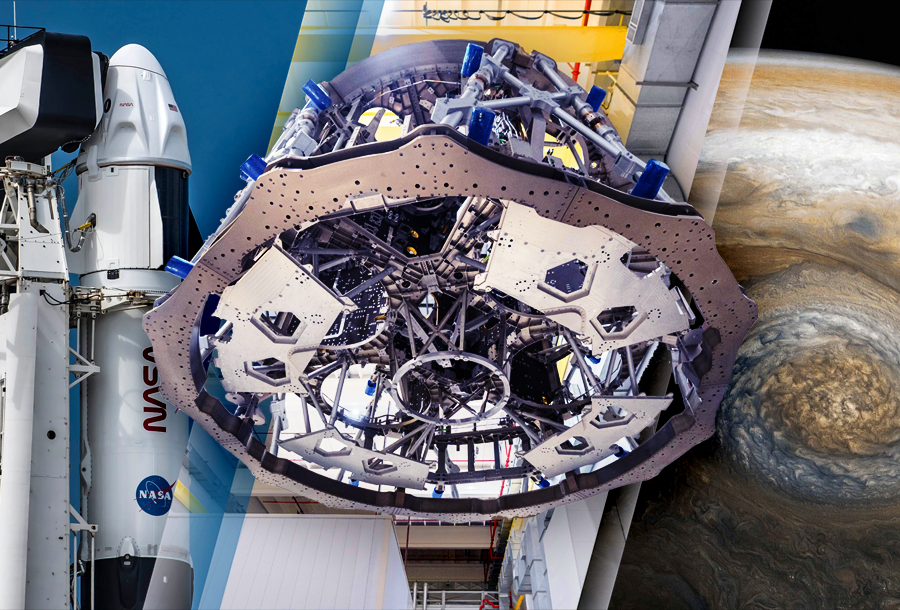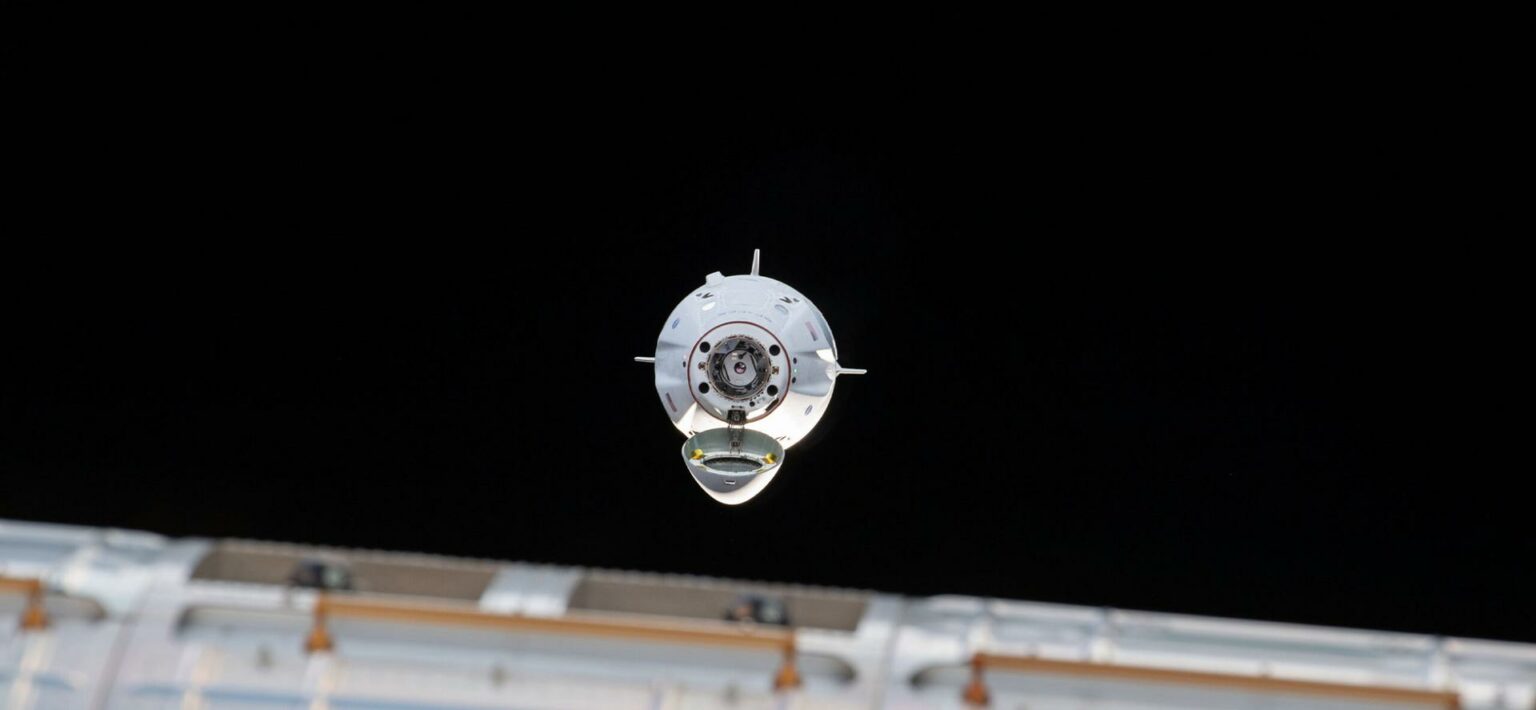Selection of space news for breakfast: The European Parliament seeks to strengthen cooperation between the US and the EU in space. NASA will buy five additional Crew Dragon flights to the ISS and test the navigation system on the Moon for the first time

NASA moon mission set to break record in navigation signal test
As the Artemis mission’s journey to the moon and NASA plans for the long voyage to Mars, new navigation capabilities will be key to science, discovery, and human exploration.
Through NASA’s Commercial Lunar Payload Services initiative, Firefly Aerospace of Cedar Park, Texas, will deliver an experimental payload to the moon’s Mare Crisium basin. NASA’s Lunar GNSS Receiver Experiment (LuGRE) payload will test a powerful new lunar navigation capability using Earth’s Global Navigation Satellite System (GNSS) signals at the moon.
Frame for Artemis IV
The fourth European Service Module structure to power astronauts on NASA’s Orion spacecraft to the Moon is now complete. The structure is seen here at a Thales Alenia Space site in Turin, Italy. The module is now on its way to Airbus’ clean rooms in Bremen, Germany where engineers will complete the integration and carry out final tests. As the powerhouse for the Orion spacecraft, the European Service Module provides propulsion and the consumables astronauts need to stay alive.
Market News

NASA to buy five additional Crew Dragon flights
NASA is planning to purchase five more Crew Dragon missions to the International Space Station from SpaceX, a move the agency says is needed to ensure long-term access to the station. In a procurement notice published June 1, NASA announced its intent to issue a sole-source modification of its existing Commercial Crew Transportation Capabilities, or CCtCap, contract with SpaceX to add five missions to the station later this decade.
Lockheed and ABL’s first UK vertical launch slips into 2023
Lockheed Martin no longer expects its UK Pathfinder mission will fly this year, although it remains in the running to perform the first-ever vertical launch to orbit from British soil. With British microlaunch startup Orbex targeting this year or early next for its maiden flight, the delay appears to pull Lockheed Martin and its launch partner ABL Space Systems behind in the race to perform the United Kingdom’s first vertical orbital launch.
GAO: U.S. Space Command basing decision process fell short on ‘transparency and credibility’
The Government Accountability Office in a report released June 2 raised concerns about how the U.S. Air Force selected Huntsville, Alabama, as its preferred location for U.S. Space Command, which currently is based in Colorado.
After a year-long review, GAO found that the Air Force’s basing decision process largely followed guidelines directed by the secretary of defense. But GAO also identified “significant shortfalls in its transparency and credibility,” said the report. As a result, the decision created the “appearance of bias.”
European parliamentarian seeks to build up ties between U.S. and E.U. in space
A member of the European Parliament is touring the United States to help enhance space policy relationships while also promoting an effort to develop a European space law. Niklas Nienass, a member of the European Parliament from Germany, met with officials in Washington this week, including at NASA, NOAA and the White House, before going on to Denver and Houston, stops that included meeting with Sen. John Hickenlooper (D-Colo.), who chairs the space subcommittee of the Senate Commerce Committee, and touring the Johnson Space Center.
Interesting

Juno Skims the Cloud Tops of Jupiter
On April 9, 2022, as NASA’s Juno mission completed its 41st close flyby of Jupiter, its JunoCam instrument captured what it would look like to ride along with the spacecraft. Scientist Andrea Luck created this animated sequence using raw JunoCam image data.
At the point of closest approach on April 9, Juno was just over 2,050 miles (3,300 kilometers) above Jupiter’s colorful cloud tops. At that moment, it was traveling at about 131,000 MPH (210,000 kilometers per hour) relative to the planet. By comparison, at closest approach Juno was more than 10 times closer to Jupiter than satellites in geosynchronous orbit are to Earth, traveling at a speed about five times faster than the Apollo missions did when they left Earth for the Moon.
5 Things to Know About NASA’s New Mineral Dust Detector
The study of the source of mineral dust on the Earth’s surface, called EMIT, will analyze dust carried through the atmosphere from dry regions to see what impact it has on the planet.
Each year, strong winds carry more than a billion metric tons – or the weight of 10,000 aircraft carriers – of mineral dust from Earth’s deserts and other dry regions through the atmosphere. While scientists know that the dust affects the environment and climate, they don’t have enough data to determine, in detail, what those effects are or may be in the future – at least not yet.
The James Webb Space Telescope could reveal the origin of primeval black holes
And with the James Webb Telescope, we’re about to see the darkest parts of the universe’s origin, in real-time. As the team supervising Webb goes on commissioning its science instruments for forthcoming science missions, they are well aware of new discoveries in modern astronomy. Namely, the recent image released of the black hole at the center of the Milky Way — which to the Webb team emphasizes the need for the space telescope to look unspeakably far back in time, to when the universe was roughly 700 million years old.
Perseverance independently chooses which rocks to shoot with a laser
NASA is hailing the Perseverance rover’s improved ability to pick its own targets. Without explicit direction from Earth, the Perseverance rover zapped two rock targets with its SuperCam instrument on Sol 442 to learn more about their elemental compositions, mission scientists said in an updated Mars mission.
Follow us on Twitter to get the most interesting space news in time
https://twitter.com/ust_magazine

